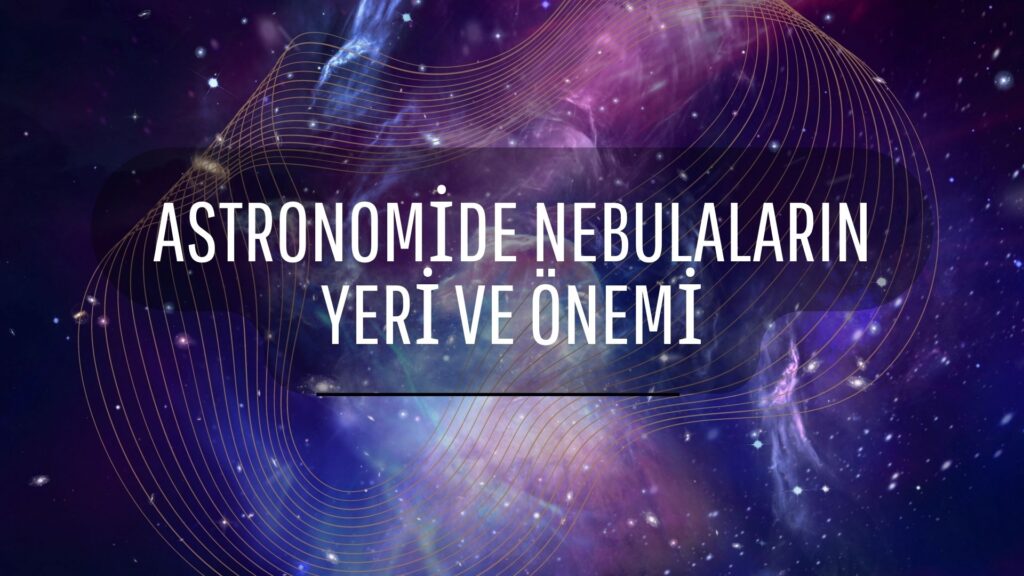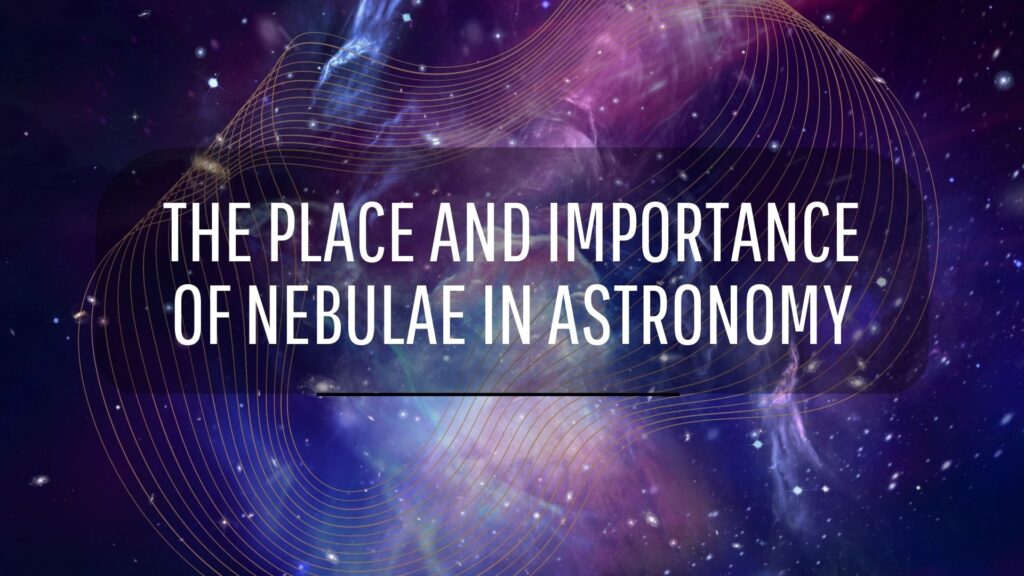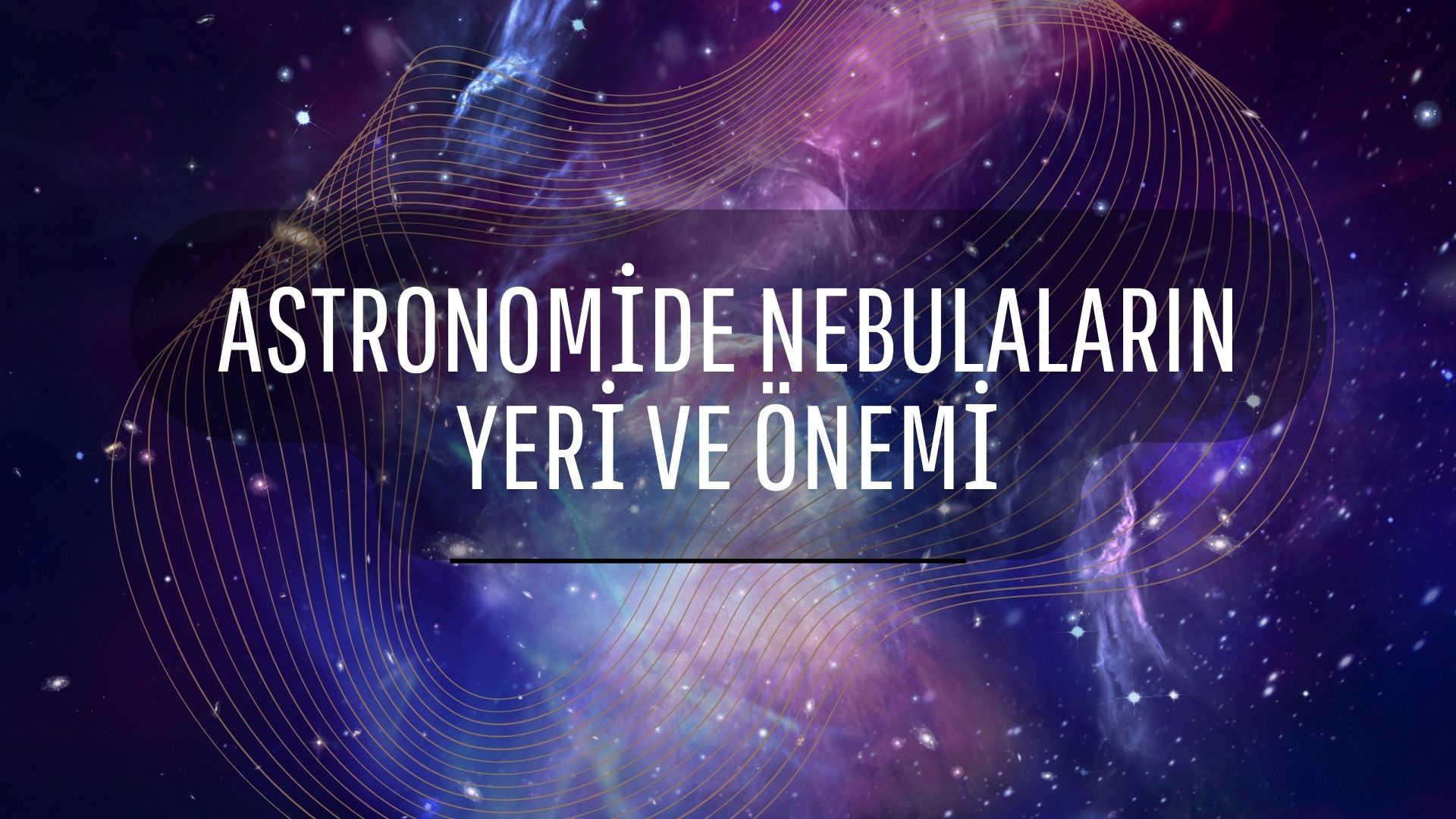Astronomide Nebulaların Yeri Ve Önemi
Nebula, astronomi ve uzay bilimi ile ilgili bir kavramdır. Uzay birçok maddeyi içinde barındıran sonsuz bir kümedir. Nebula denen şey ise uzayda yer alan gaz bulutudur.
Nebulaların İçeriği
Nebulaların içeriği başlangıçta bilinmezliğini korusa da, günümüzde nebulaların tamamına yakın bir bölümünün hidrojen kaynaklı bir gaz kütlesinden oluştuğunu bilmekteyiz. Dünya ile kıyas edilemeyecek seyreklikte gaz yoğunluğuna sahip olan nebula, çok geniş alanlara yayılıp içinde birçok madde barındırabilir. Uzay boşluğunda birkaç atom gerektiği kadar yaklaştığı anda nebula oluşum sürecine girer.
Giderek fazlalaşan atom varlığı, kütle çekiminin de etkisi ile daha fazla madde ve parçacık biriktirmeye devam eder. Bu olay zincirinin sonunda büyük bir gaz kütlesi oluşur. Madde birikimi yapan ve sınıra ulaşan gaz bulutu nükleer reaksiyonlarla yıldızları ve sonraki süreçte gezegenleri meydana getirir. İşte nebula bu döngüyü başlatan etkiye sahip olduğu için astronomi ve uzay biliminde önem arz eder.
Nebulalar Radyo Dalgaları Yayar Mı?
Nebulalar içerdiği hidrojen ile karanlık hidrojen bulutları oluşturur. Karanlık hidrojen bulutları da çevreye radyo dalgaları yayar. Bu dalgalar, çok uzak mesafelere varabilir. Radyo dalgalarını inceleyen bu bilinmeze ışık tutan radyoastronomi, gaz bulutlarının sarmal bir yol izlediğini açığa çıkarmıştır.
Nebula Çeşitleri
Nebula çeşitleri; karanlık, yansıma, salma ve gezegenimsi nebulalar ile süpernova kalıntıları olarak sıralanabilir.
Karanlık nebulalar, çok yoğun olmaları yüzünden ışık geçirmezliği ile etrafına göre koyu gözüken bulutsular olarak yer alır. Genelde salma ve yansıma nebulaları ile birlikte olduğu gözlemlenir. Tek başlarına olduklarında ayrıntılarını fark edebilmek daha zordur.
Yansıma nebulalar, etrafındaki bir yıldızdan aldığı ışık sayesinde yansımaya uğrayan bir bulutsudur. Genellikle yalnız bulunmazlar.
Salma nebulalar, yüksek sıcaklıkta iyonize olmuş gazlardan oluşmuştur. Uğradığı reaksiyonun sebebi bir yıldızdır. Kendi ışığına sahip olan salma nebulası, genellikle kırmızı görünür. Sebebi; salma çizgisindeki fazla miktarda bulunan hidrojen elementidir.
Gezegenimsi nebulalar, ölü yıldızların oluşturduğu bulutsulardır. Gezegenler ile şekilsel veya kadersel bir benzerliği yoktur.
Süpernova kalıntıları, kütlece büyük olan yıldızların ömrünün sonunda yaşadığı süpernova patlaması sonucu oluşan dağınık yapılardır. Süpernova kalıntıları, gezegenimsi nebulalardan daha şiddetli bir patlama sonucu oluştuğu için daha dağınık bir görünüme sahiptir.

The Place and Importance of Nebulae in Astronomy
Nebula is a concept related to astronomy and space science. Space is an infinite set containing many substances. A nebula is a cloud of gas in space.
Content of Nebulae
Although the content of nebulae was initially unknown, we now know that almost all nebulae are composed of a gas mass of hydrogen origin. The nebula, which has a gas density incomparable to the world, can spread over very large areas and contain many substances. As soon as a few atoms get as close as necessary in the vacuum of space, the nebula enters the process of formation.
The increasing number of atoms continues to accumulate more matter and particles with the effect of gravity. At the end of this chain of events, a large gas mass is formed. The gas cloud, which accumulates matter and reaches the limit, forms stars and planets in the next process by nuclear reactions. The nebula is important in astronomy and space science because it has the effect that starts this cycle .
Do Nebulas Emit Radio Waves?
Nebulas form dark hydrogen clouds with the hydrogen they contain. Dark hydrogen clouds also emit radio waves into the environment. These waves can reach great distances. Radioastronomy, which sheds light on this unknown by examining radio waves, has revealed that gas clouds follow a spiral path.
Types of Nebula
Nebula types; darkness, reflection, emission, and planetary nebulae and supernova remnants.
Dark nebulae appear as nebulae that appear dark relative to their surroundings due to their opacity due to their very density. It is generally observed to be associated with emission and reflection nebulae. It is more difficult to notice the details when they are alone.
Reflection nebulae are nebulae that are reflected by the light it receives from a star around it. They are not usually found alone.
Release nebulae are composed of gases that have been ionized at high temperatures. The reason for his reaction is a star. The emission nebula, which has its own light, often appears red. The reason; It is the hydrogen element present in excess in the emission line.
Planetary nebulae are nebulae formed by dead stars. It has no shape or destiny similarity with the planets.
Supernova remnants are scattered structures formed as a result of supernova explosion in which massive stars experience the end of their life. Supernova remnants have a more diffuse appearance because they were formed by a more violent explosion than planetary nebulae.








